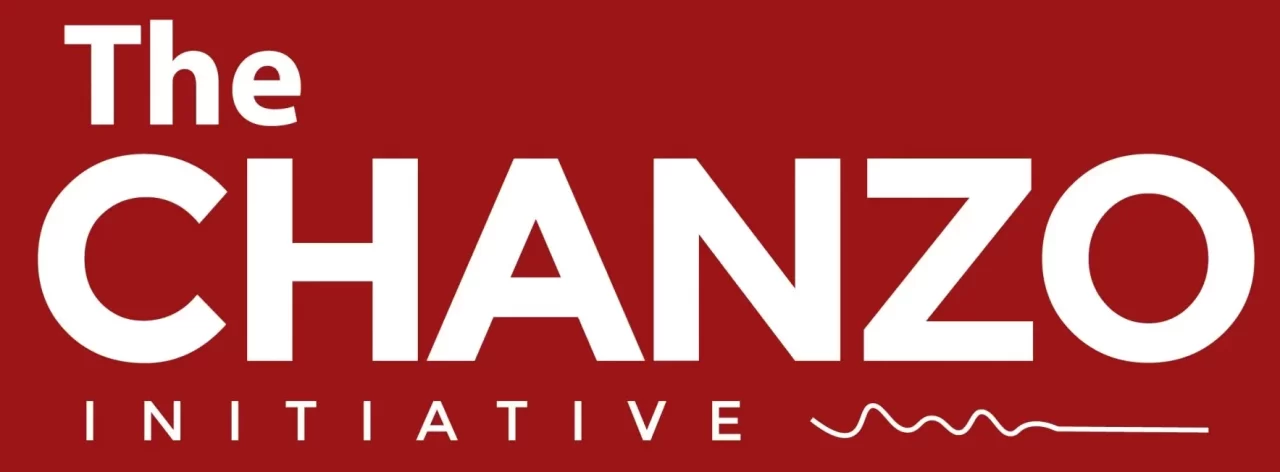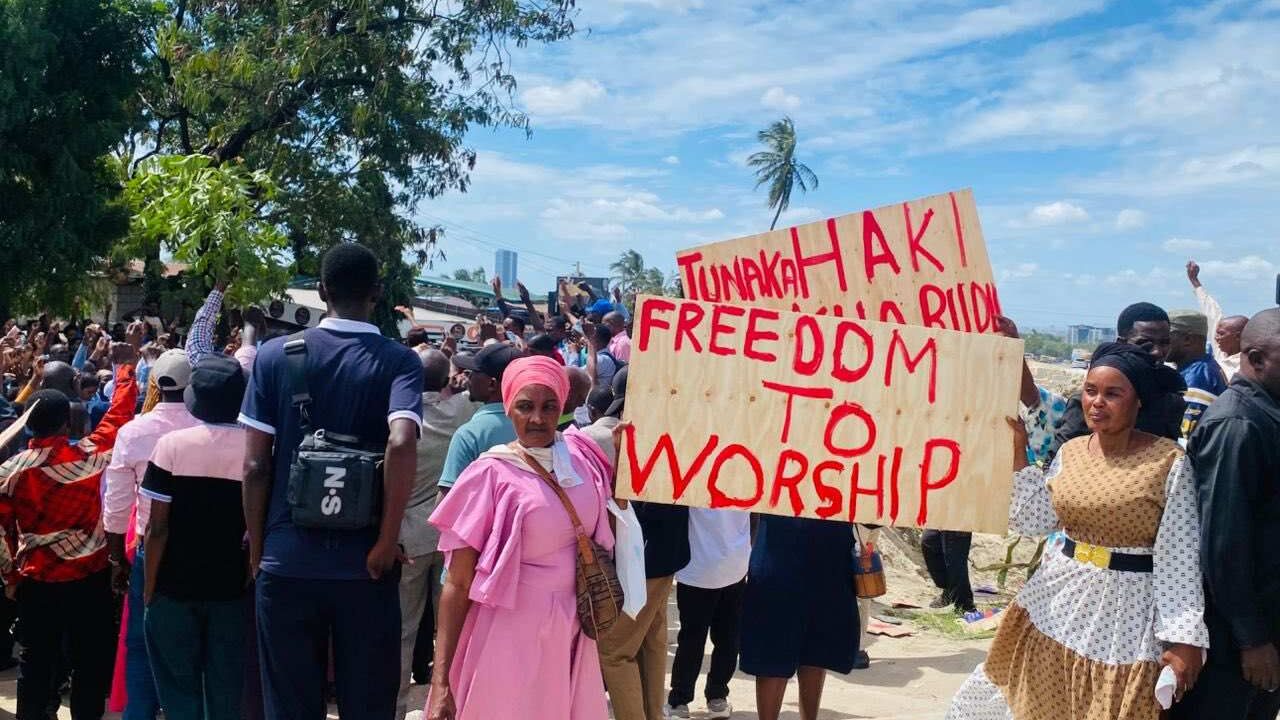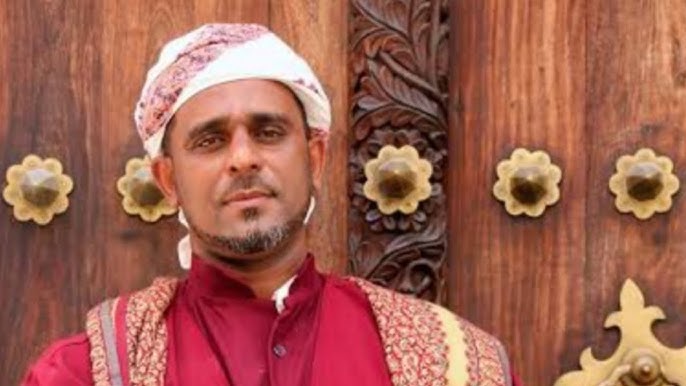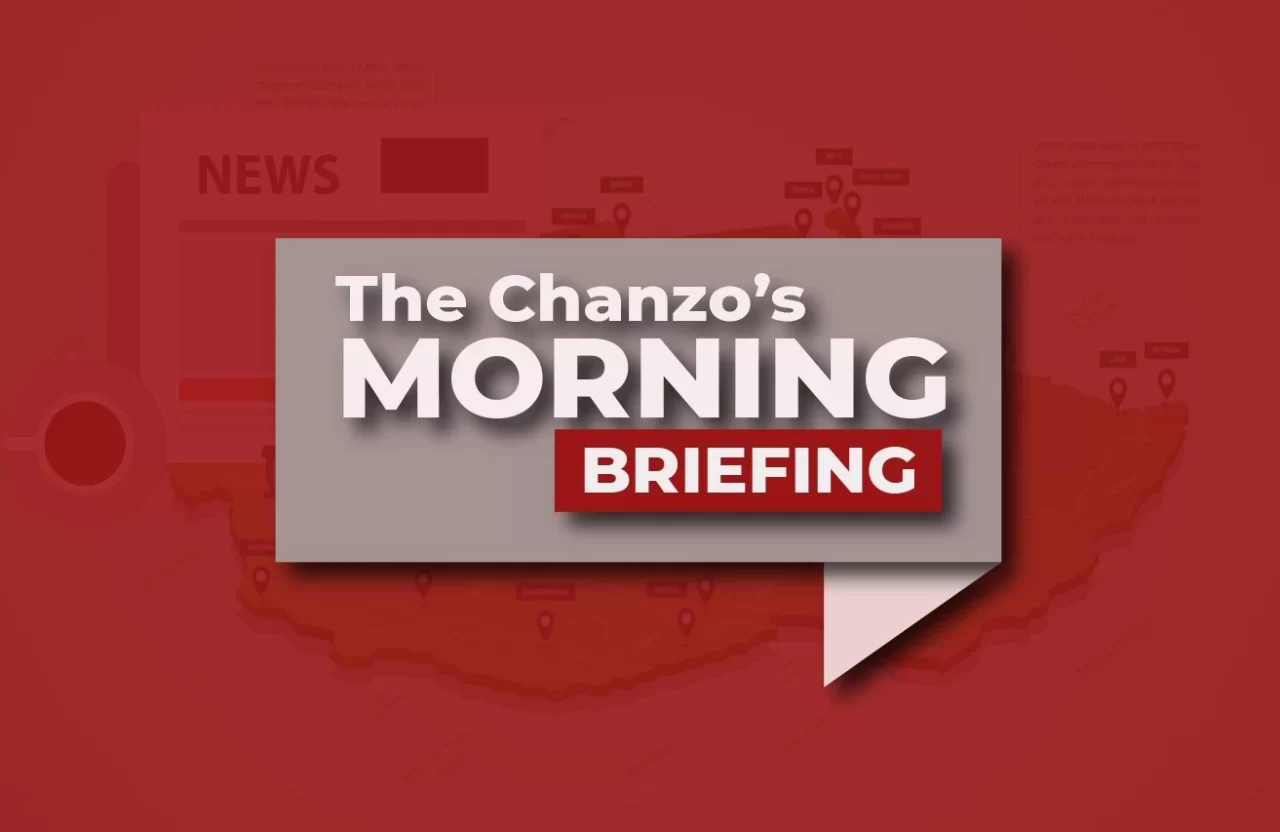Tanzania currently has nineteen registered political parties, with the Civic United Front (CUF), Chama cha Demokrasia na Maendeleo (CHADEMA), Union for Multiparty Democracy (UMD), National Convention for Construction and Reform (NCCR-Mageuzi), National League for Democracy (NLD), United Peoples’ Democratic Party (UPDP), National Reconstruction Alliance (NRA), African Democratic Alliance Party (ADA-TADEA) and Tanzania Labour Party (TLP) as the oldest opposition parties, established 31 years ago in 1993. The others were registered in disparity between 1994 to 2013 marked by the establishment of Chama cha Ukombozi wa Umma (CHAUMMA).
Apart from the new requests at the Political Party Registrar, the youngest party in Tanzania is the Alliance for Change and Transparency (ACT-Wazalendo), which recently celebrated its 10th anniversary, formulated in 2014. The most vibrant and strongest opposition parties in the current political landscape are CHADEMA and ACT-Wazalendo.
ACT-Wazalendo stands out with unique aspects. Firstly, it was founded by remnants of CHADEMA; secondly, it is a political party that, from the outset, seemed doomed and unlikely to succeed; and thirdly, the most unfavorable narrative was ACT-Wazalendo as a hand-in-glove partner of the ruling Chama cha Mapinduzi (CCM), a notion nicknamed as “CCM B.”
After all this, recent remarks by ACT-Wazalendo former party leader Zitto Kabwe about being advised by former president Jakaya Mrisho Kikwete to start his own party instead of joining CCM sparked my interest and raised my eyebrows.
Such information is hard to swallow for those who do not understand alliances and the dynamics of the political elder counsel across parties. Reflecting on the ten years of ACT-Wazalendo calls for a narrative of my personal political enthusiast journey.
All events and occurrences recounted here are based on factual aspects, drawn from the digital realm and the temperament of netizens over time. The ten-year anniversary of ACT-Wazalendo’s founding has prompted me to interrupt my hiatus from writing political reflections and perspectives.
2014 – The inception
My take is that, though Zitto and his colleagues – Prof Kitila Mkumbo and Samson Mwigamba – may have been considering establishing a new party out of CHADEMA, it was not an affirmed decision to form a party.
READ MORE: ACT-Wazalendo: A Decade of Democratic Resilience in Tanzania My Generation Witnessed
The party’s formation was accelerated by M3’s technological glitch caused by metadata from a document whose content was copied and then pasted through an anonymous account on JamiiForums. It was the 3rd version of “WARAKA WA MABADILIKO,” or Statement for Change.
The Statement for Change comprised a series of submitted statements that comprehensively exposed the party leadership weaknesses within CHADEMA and called for Accountability, Transparency, Good Governance, and a way forward.
Not everyone can confidently articulate their feelings publicly on flaws within their political parties like the recent expose by Tundu Antipas Lissu, the Chief Legal Advisor of CHADEMA, regarding his fellow leader, CHADEMA national chairperson Freeman Mbowe in Iringa.
Similarly, Samson Mwigamba, signing off as M3 in 2013, did the same through a hidden ID. The Statement for Change had gained some popularity, so by the time it was posted online, it just took a few minutes to spread. It contained the metadata showcasing Mwigamba’s involvement, which further fueled the message.
I remember it like it was yesterday. The content was posted in the evening around 18:00 to 19:00. It has been said he was still at headquarters by the time CHADEMA caught wind of the posted statement. All this ignited heightened internal political tensions between CHADEMA and Zitto.
While many speculated that Zitto would default to CCM, I held a different theory: a new party would emerge. Before all this M1, M2 and M3 chronicle, back then there were rumours that Zitto intended to move to CCM. In 2012, I had the privilege of conducting an interview with Zitto on JamiiForums.
This interview, breaking records for the length of an eight-hour text-to-text interview ever done, thoroughly explored all aspects associated with Zitto at the time. Information from this interview remained prominent in mainstream media for over a week.
READ MORE: ACT-Wazalendo’s New Leadership Singles Out Election As Top Priority
In that interview, when asked if he planned to move to CCM, Zitto responded firmly: “I have never been a member of CCM; my entire family are among the founders of CHADEMA. I have no history with CCM. It’s possible that those who claim I am CCM have mostly been members of CCM, have families within CCM, and have benefited from CCM. I have never been, and I never will be.”
This statement among most, convinced me beyond doubt that he would not join CCM, contrary to popular belief. Even before the party was officially announced, my theory was that a new party would emerge—and indeed, it did.
2015 – The chaos
The party was only one year old, yet it exhibited an aggressiveness and optimism parallel to how a cat sees its reflection in the mirror as that of a lion. It was determined not to settle for a mere figurehead but rather seek a presidential candidate with the potential to garner significant votes.
It was evident that the party did not believe it could secure the presidential seat, so it strategically aimed for parliamentary seats instead. In Tanzania, when an opposition party reaches a certain fraction of presidential votes, it is awarded special seats in parliament.
Unofficial discussions circulated on digital platforms, suggesting that Makongoro Nyerere, son of Tanzania’s founding leader Julius Nyerere, was considered as the presidential candidate.
There were also unconfirmed political rumours that talks were underway to convince the late Edward Lowassa to join the party and seek the Presidential Election through ACT-Wazalendo. Every sane politician in Tanzania then knew how valuable and influential Lowassa was and that it was only a matter of time before he would leave CCM.
Nevertheless, these rumours never materialized.
Eventually, it became publicly evident among party members that they favoured Prof Mkumbo, now Minister for Planning and Investment, as the presidential candidate. For those questioning why Zitto was not considered, he was only 38 years old and constitutionally ineligible to run for president.
READ MORE: Fourth ACT-Wazalendo Annual Convention Kicks Off in Dar
Some ACT-Wazalendo members even organized a rally to express their love and support for Mkumbo, a former university professor. They hoped he would be the presidential candidate, but he publicly declined, stating that after deliberations with his family, he would not be running for president.
As a spectator, I could sense the chaos within ACT-Wazalendo. Right after the decline by Mkumbo, Samson Mwigamba was announced as the candidate. Yet again, after a few days of the announcement, ACT-Wazalendo announced that Anna Mghwira, who joined the party in March 2015, was to be its presidential candidate. She proved to be an excellent candidate. As a woman, she gained prominence, attention, and influence during the party’s campaigns.
In 2015, amidst a pool of 22 political parties in Tanzania, ACT-Wazalendo ranked fourth in the National Assembly elections, harvesting 2.22 per cent of the vote and locking one elected Member of Parliament.
The party even surpassed the popular and elder NCCR-Mageuzi, which was 20 years its senior. CCM received the most votes, 55 per cent, followed by CHADEMA, 31.775 per cent, and CUF, 8.63 per cent.
The late Mghwira was the third most-voted presidential candidate, after the late Edward Lowassa of CHADEMA and the late John Magufuli of CCM. This signalled a pivotal moment for ACT Wazalendo, but there was still a long way to go.
2015 to 2018 – The ‘Zitto’s party’ narrative
While the main figures implicated were Zitto Kabwe, Kitila Mkumbo, and Simon Mwigamba just before their departure from CHADEMA, Zitto was the most prominently accused. CHADEMA’s narrative right before and after the ‘WARAKA WA MABADILIKO’ was that Zitto harboured ambitions for the party’s chairmanship, leading to his challenging of Mbowe.
Zitto was also accused of being a sellout, a non-patriotic power-monger, and a failed politician with no future in politics. From my understanding, ACT-Wazalendo was founded by Zitto and partners who shared a similar vision.
READ MORE: Who Will Likely Succeed Zitto Kabwe As ACT-Wazalendo’s Party Leader?
However, from an external perspective, it appeared to the majority that Zitto initiated the party and the others joined him. He became the central figure in the entire saga and thus bore the brunt of the accusations.
The advent of ACT-Wazalendo initially seemed to position it as the preferred destination for individuals disenchanted with both CHADEMA and CCM. The party displayed the potential to attract not only these dissatisfied members but also a broader spectrum of discontented politicians seeking a new political platform.
Yet, this momentum was short-lived. A sequence of political manoeuvres by the CCM government soon altered the narrative. The government’s appointment of high-profile individuals from within ACT-Wazalendo weakened the party’s image, ultimately stagnating its growth and influence.
With Zitto being the sole elected member of parliament, along with the late Magufuli appointing Mghwira as the Kilimanjaro regional commissioner in June 2017, then Mkumbo as the Permanent Secretary General at the Ministry of Water and Irrigation, resulting in his public resignation from party membership in October 2017, and Samson Mwigamba and his followers also defecting to CCM in October 2017, it consolidated the perception of the party as Zitto’s realm.
Despite attempts to bridge the gap by appointing the renowned lawyer Albert Msando as the party’s Legal Adviser in May 2017, he, too, eventually defected to CCM in November of the same year. Mr Msando currently serves as the Handeni district commissioner.
For ACT-Wazalendo to shed the ‘Zitto’s party’ image and demonstrate seriousness about growth and change, strategic and institutional transformations were necessary. Over time, the party has been able to achieve this.
The appointment of new prominent and influential political figures such as Dorothy Semu as the new party leader, Othman Masoud Othman as its national chairperson, Isihaka Machinjita as vice chairperson (Tanzania Mainland), and Ismail Jussa as vice chairperson (Zanzibar), among others, and the evident growth of the youth within the party such as Ado Shaibu, Abdul Nondo, Mwanaisha Mndeme and many more, has diluted the ‘Zitto’s party’ narrative.
2019-2023 – The transformative footsteps
The past four years have been significant for ACT-Wazalendo. The party has achieved more milestones during this period than in the preceding four years.
READ MORE: High Cost of Living on Top of ACT-Wazalendo’s Agenda As It Inaugurates Its Political Rallies
A significant moment occurred in 2019 when the late Maalim Seif Sharif Hamad and his followers absconded from CUF to ACT-Wazalendo. This event laid the foundation for ACT-Wazalendo to become the most influential opposition party in Zanzibar, influenced by Maalim’s candidacy for the Zanzibar presidency in 2020.
Additionally, in 2020, the late Bernard Membe, a prominent CCM political leader, joined ACT-Wazalendo and became the party’s presidential candidate for Tanzania. In the 2020 General Elections, ACT-Wazalendo emerged as the leading opposition party with four elected parliamentary seats, surpassing CUF with three seats and CHADEMA with one seat.
In 2021, Zitto assumed the chairmanship of the Tanzania Center for Democracy (TCD), which aligned perfectly with President Samia Suluhu Hassan’s new era of leadership.
While TCD may have its shortcomings, it serves as an invaluable platform for solution-oriented political discourse. It required a party with the ideologies parallel to ACT-Wazalendo’s to set the wheels of democratic assurance in motion. The same year, TCD introduced the ‘Dodoma Resolutions on Democracy.’
Most of the discussed matters and discussions were prompted by the challenges observed during the 2020 general elections and the limitations on freedom of assembly and speech during the late President Magufuli’s previous presidency. Samia’s ascension to power brought a renewed sense of hope for the opposition.
In 2022, ACT-Wazalendo introduced an innovative leadership development program with the launch of the Shadow Cabinet. This initiative serves as a practical mechanism for nurturing political leadership skills among emerging leaders, particularly youth, within the party.
Mirroring the structure of the current government, the Shadow Cabinet addresses pertinent social, economic, and political issues facing the country.
READ MORE: Will GNU Survive Ongoing CCM, ACT-Wazalendo Wrangling?
In 2022, ACT-Wazalendo inaugurated its headquarters, named after the late Maalim Seif. The building embodies the party’s vision, with structures designed to enhance governance and institutionalize important aspects, fostering a culture of leveraging resources for strategic party discussions.
In 2023, ACT-Wazalendo was the leading opposition party by far, with a call to action and accountability drawn from research, facts, and data to the ruling party on matters pertaining to the interests of Tanzanians.
2024 to 2025 – The birth of a big party
The first four months of 2024 has seen impressive moves from the party. Marking its 10th anniversary reminds those in the political arena and political enthusiasts that ACT-Wazalendo is here for the long haul and fully committed to its mission.
The party’s milestone coincides remarkably well with expected political campaigns leading up to the by-elections later this year and the presidential general elections in 2025.
The consistency of ACT-Wazalendo’s agenda, which prioritises addressing challenges, problems, and people’s needs while avoiding impromptu political agendas, has steadily reinforced the party’s reputation, credibility, and influence.
The sequence of the party’s activities is marked by internal strategic-reflection meetings aimed at the party’s welfare. The initiation of the fourth annual convention at Mlimani City featured cross-leadership political debates during internal elections, the selection of new Shadow and Deputy leaders, the election of new party leaders, and the significant move of Zitto Kabwe stepping down as the Party Leader as mandated by the ACT-Wazalendo constitution, among other developments.
ACT-Wazalendo has established a cross-generational leadership structure, with each generation demonstrating serious and professional leadership skills and poised to assume positions within the ruling party.
READ MORE: Where Did ACT-Wazalendo Get Sh500 million For It’s New Headquarters?
Still, despite these strengths, there remains a need for significant investment in political infrastructure and grassroots mobilization in Tanzania Mainland.
My perspective and position over the past 15 years have been that CCM stands as one of the most adeptly weaponized political machineries, proficient in political strategies and maneuvers. I’ve previously discussed this topic when sharing my insights from 2013 on why CCM was poised to emerge victorious in the 2015 general election.
CCM is not just a political party; it is an institution, and any political entity aspiring to challenge its dominance must invest in political acumen and ingenuity. While ACT Wazalendo is that party, it is not there yet.
The 2025 presidential elections will be significant for ACT-Wazalendo. My prediction is that it will be the opposition party with the largest number of elected Members of Parliament across the 264 constituencies in Tanzania Mainland and Islands. They will not win the presidential election, no opposition party will.
While it might be an uncomfortable truth for some, this conclusion stems from my careful observation of the primary opposition parties—CHADEMA and ACT-Wazalendo—the intricate political dynamics, the power structures within the CCM party, and the agenda-setting prowess of each of Tanzania’s top three political parties. Samia will be the president-elect of the general elections in 2025.
ACT-Wazalendo – The future
ACT-Wazalendo has a promising next seven years of enjoying the political arena as one of the most significant parties in Tanzania and possibly the most prominent opposition party. The youth and a significant portion of ACT-Wazalendo’s leadership find inspiration in the narrative of Bassirou Faye, Senegal’s newly elected president at the age of 44.
Despite some shared characteristics between ACT-Wazalendo and the PASTEF, Faye’s party, such as their establishment in 2014 and their ideological alignment, which is left-wing, the differences between them are substantial. Comparing the nature of the Senegalese and Tanzanian citizens—crucial to the voting process—is analogous to contrasting the disparities between oil and water.
READ MORE: Here’s How ACT-Wazalendo’s Proposal on Sustainable Social Protection Looks Like in Numbers
Another important aspect is that for serious change-driven political parties in Tanzania, historical patterns suggest that a party’s prominence remains vibrant and its effectiveness at the climax is sustained for a period ranging from seven to twenty years.
While the majority of opposition political parties have typically exhibited structures indicative of sole ownership, ACT-Wazalendo appears to have recognized and addressed this challenge by institutionalizing its vision. This strategic approach is one of the key factors contributing to its potential as a future ruling party.
But, that depends significantly on whether CCM will remain unified and not be divided by powerful political figures starting their own party – a matter which is unlikely, for if it was to happen in this generation, it would have happened in 2015. Nonetheless, ACT-Wazalendo has earned the rights to celebrate wins in their strides step by step, and thus this calls for a huge compliments on having celebrated their 10th year.
One of my favourite quotes comes from former Canadian Prime Minister Pierre Trudeau, who said, “The essential ingredient of politics is timing.” ACT-Wazalendo demonstrates promise, but only time shall tell.
Asha D. Abinallah is the CEO of Tech & Media Convergency (TMC). She describes herself as a political analyst on hiatus. She can be reached at a.abinallah@mediaconvergency.co.tz or on X as @AD_Abinallah. The opinions expressed here are the writer’s own and do not necessarily reflect those of The Chanzo. If you are interested in publishing in this space, please contact our editors at editor@thechanzo.com.





4 responses
Ahsante Asha, Makala nzuri.
Madam, kazi nzuri sana
Lakini CHADEMA ikishiriki kwa asilimia 100 UCHAGUZI ujao basi ACT hawataweza ongoza kwa viti BUNGENI! Labda upande wa Zenji tu
What a nuanced writ! Asha, I did not know you are a political enthusiast with such a depth of taste and knowledge.
I cannot wait for more reads from you!
Great article. Waiting to read more from you..